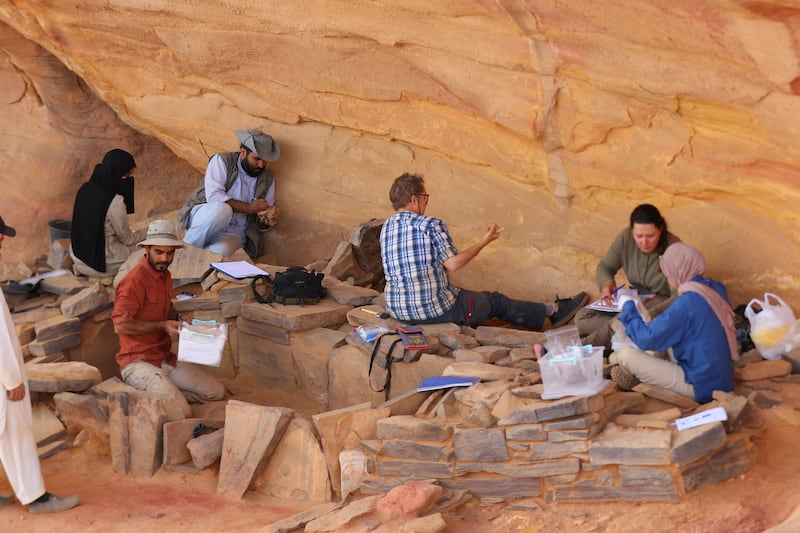When it comes to archaeology, AlUla may perhaps be best known for the Nabataean tombs at Hegra – however, these are just the tip of the iceberg.
A recent pair of archaeological excavations have unveiled fascinating new findings dating much further back, indicating the region’s Neolithic inhabitants conducted “complex and sophisticated ritual practices” more than 7,000 years ago.
The findings are centred on 1,600 prehistoric stone structures spread across northern Arabia known as mustatils. These are large, open-air rectangular structures with low stone walls.
Researchers believe Neolithic people may have embarked on pilgrimages to these sites, where they conducted rituals.
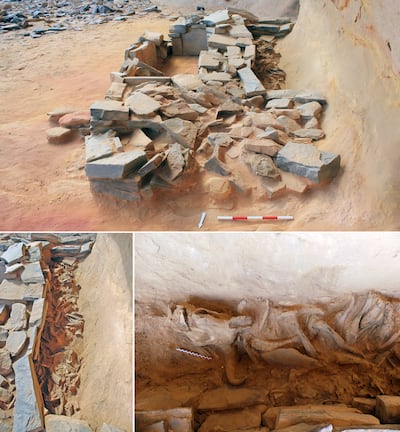
The abundance of domestic species found among the animal offerings made at the sites imply the presence of a pastoral nomadic community, who may have created the mustatils as a way of building social cohesion or marking territory.
Excavations since 2018 have indicated that the structures may represent one of the world’s oldest pilgrimage traditions. The two studies – led by Wael Abu-Azizeh, of the Archeorient Laboratory and Lyon 2 University in France, and Melissa Kennedy, of the University of Sydney in Australia, respectively – have both been peer-reviewed.
In 2018, Abu-Azizeh led a University of Oxford excavation of a mustatil to the north-east of AlUla. The site dates back to between 5300 and 5000 BC.
The team found a chamber filled with “an exceptional discovery” of horns and skull fragments, packed densely together in a layer rising 30cm from the floor.
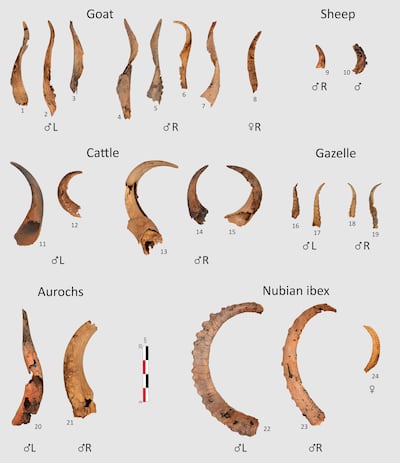
The team describe the site as “a unique and unprecedented assemblage in the context of north Arabian Neolithic” history that represented a “testimony of complex and sophisticated ritual practices”.
Most of the horns and skulls – 95 per cent – were from domestic species including goats, cattle and sheep, alongside others such as gazelles, Nubian ibex and the now-extinct aurochs.
Beneath the bones was a thin bed of twigs, placed ritualistically on the sandstone surface. The team believes pastoral nomads may have left the fragments at the site during a single ceremony, as an offering to a deity.
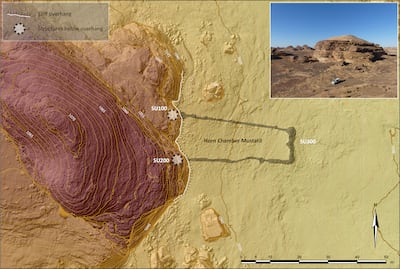
Known as the "horn chamber", a space spanning 3.25 metres by 0.8 metres sits at the western end of a mustatil, which measures 40 metres by 12 metres. During the ritual, individual nomads may have taken it in turns to enter through a narrow doorway and a small antechamber to leave their gifts, on behalf of their social groups. It is thought these groups could have been part of a wider pastoral tribal community.
“The data of the horn chamber mustatil sheds an entirely new light on the complexity of the ritual practices performed by these early pastoralists. The reconstruction of these ritual practices highlights, the process through which the individual or smaller scale social component interacts with the wider pastoral, tribal group," Abu-Azizeh tells The National.
The second study, led by Kennedy of the University of Sydney in 2019, looked at a mustatil nestled deep within dense sandstone canyons east of AlUla. There, the team discovered a chamber filled with horn and skull fragments dating back to between 5200 and 5000 BC.
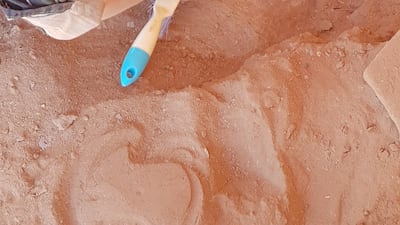
Compared to the other horn chamber, this site held fewer specimens, which appear to have been offered in several phases and over the generations, rather than during one ceremony. The majority of the bones were from cattle, while there were others from goats, which the team says is “among the earliest attestation of domestic cattle and goat in northern Arabia”.
Kennedy tells The National: “The ritual deposition of horn and skull elements at the mustatil that our team excavated suggests a profound intersection of belief and economic life-ways in the Late Neolithic of northern Arabia.
“The incorporation of these two facets and the scale of these structures suggests a deeply rooted belief, one shared over a vast geographic area. All of this indicates that northern Arabia was marked by a far more interconnected landscape and culture than previously supposed. As scholars, we are just beginning to understand the scale and breadth of this unique cultural horizon.”
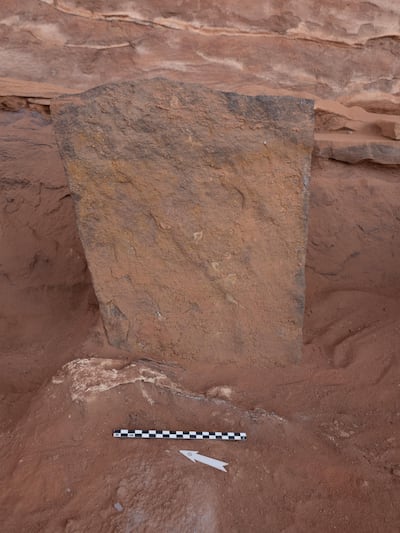
An upright stone standing 0.8 metres tall at the heart of the shrine may have been the focal point of the bone offering ritual. Most horns and skull parts are scattered around this stone.
The team believes the stone is one of the Arabian Peninsula’s earliest known betyls, which they describe as “a mediator between humankind and the divine, acting as a proxy or a manifestation of an unknown Neolithic deity/deities or religious idea, to which the faunal elements were deposited as votive offerings".
Researchers say the site also “represents one of the earliest examples of ‘pilgrimage’ or shrine revisiting currently identified in the Arabian Peninsula”.
At the time when the shrines were in use, the region's climate was growing increasingly arid and tempestuous micro-climate fluctuations made constant mobility and herding crucial.
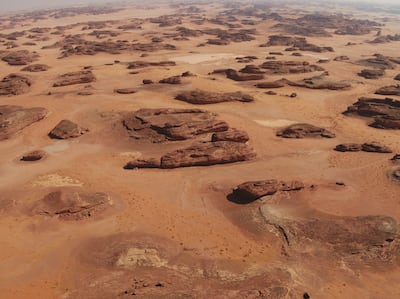
During the Mid-Holocene Period, the rituals may have been undertaken in hope of assuring constant rain and fertility. Researchers hope to explore whether the sites may have originally been placed close to water sources, such as wadis.
AlUla's rich archaeological history forms a fitting backdrop for the inaugural AlUla World Archaeology Summit, running from Wednesday to Friday. More than 60 speakers from various backgrounds will participate in the event and discuss how to promote archaeology on a global level, paving the way for new finds and innovations in the field.
Rebecca Foote of the Royal Commission of AlUla describes the region of Saudi Arabia as a “critical, understudied area with a deep and complex past”.
“Since the establishment of the Royal Commission for AlUla in 2017, extraordinary attention and resources have been exacted on the study of the archaeological assets and cultural heritage of AlUla County and Khaybar," she says.
“Recent discoveries, such as the excavations at mustatils, demonstrate north-west Arabia’s centrality to understanding the greater region and begin to clarify the extraordinary richness of life in this pivotal zone of the Arabian Peninsula from the Palaeolithic through to the Islamic period.”
